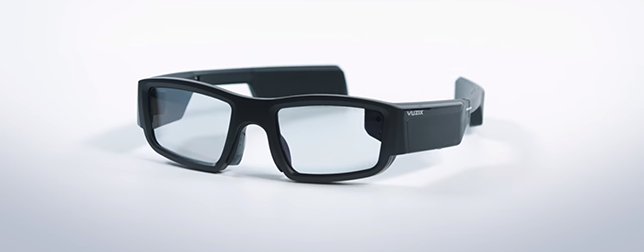Vuzix, a pioneer in micro-optics has announced that it is partnering with Plessey Semiconductor, a leading developer of award-winning optoelectronic technology solutions, to develop next-generation Augmented Reality (AR) smartglasses. The companies aim to combine Plessey’s Quanta-Brite microLED light technology with Vuzix’s extensive expertise and IP in smart glasses and waveguide optic technologies to create new generation of AR smartglasses with the sleekest form factors to date.
Read more Tobii and Lumus Collaborate to Integrate Eye Tracking Technology into AR Glasses
Plessey has successfully exhibited how its novel monolithic microLED technology can be incorporated into smartglasses technology for an extensive collection of AR and MR (mixed-reality) applications for use both indoors and out. Additionally, Vuzix has already developed an evolving group of smartglasses resulting in the Vuzix Blade, the next-gen smart display with see-through viewing experience via proprietary waveguide optics. Waveguide, which is made from glass with precision nanostructures, is an important component in an AR/MR product. It enables wearers to see hi-res computer-generated images and data superimposed over images from the real world.
In the development of its next-generation waveguide based products, Vuzix has selected Plessey’s microLED-based Quanta-Brite light engine, which delivers extremely high efficiency with significant improvements in lumen output compared to other light sources currently available on the market.
When combined with the powerful and efficient Snapdragon XR1, Vuzix expects better battery life and higher quality AR content for its next wave of smartglasses. Similarly, the newer components will contribute to a slimmer form factor.
To achieve enhanced energy efficiency and light output in a smaller footprint, Plessey uses a proprietary gallium-nitride-on-silicon (GaN-on-Si) construction that delivers a brighter and more uniform light.
The smaller and more efficient microLED based Quanta-Brite light engine will not only eat less energy increase battery life, but also enable Vuzix to cut a significant amount of volume from the display engine in future generations of the waveguide-based smart glasses, while simultaneously delivering upgraded optical performance at a lower cost. The resulting optical system is up to 50 percent smaller, simpler, lighter, and cheaper than incumbent solutions and the high performance microLED emitters combined with minimal optical system losses result is remarkably intensified power efficiency.
Read more Eye-tracking is Going to Be a Game Changer for Virtual Reality
“This development with Vuzix, the leading provider of next-generation augmented reality glasses, is a significant endorsement of Plessey’s GaN-on-silicon microLED approach,” said Dr Keith Strickland, Chief Technology Officer at Plessey. “Monolithic microLED technology is fast emerging as the only one that can provide high luminance in a very small form factor with minimal energy consumption, necessary for reducing costs and enabling lightweight battery-powered products for a range of emerging consumer and industrial applications.”













